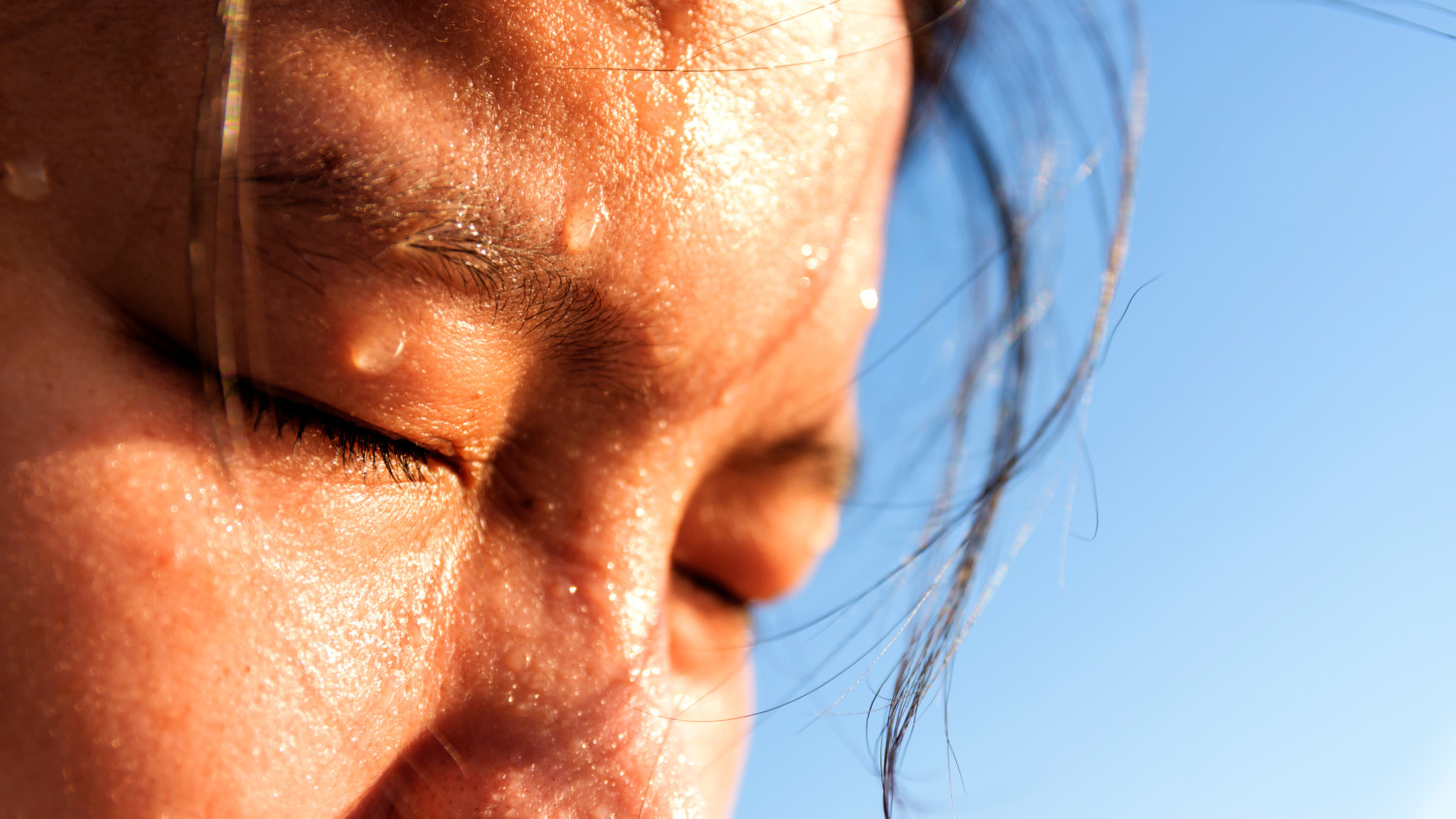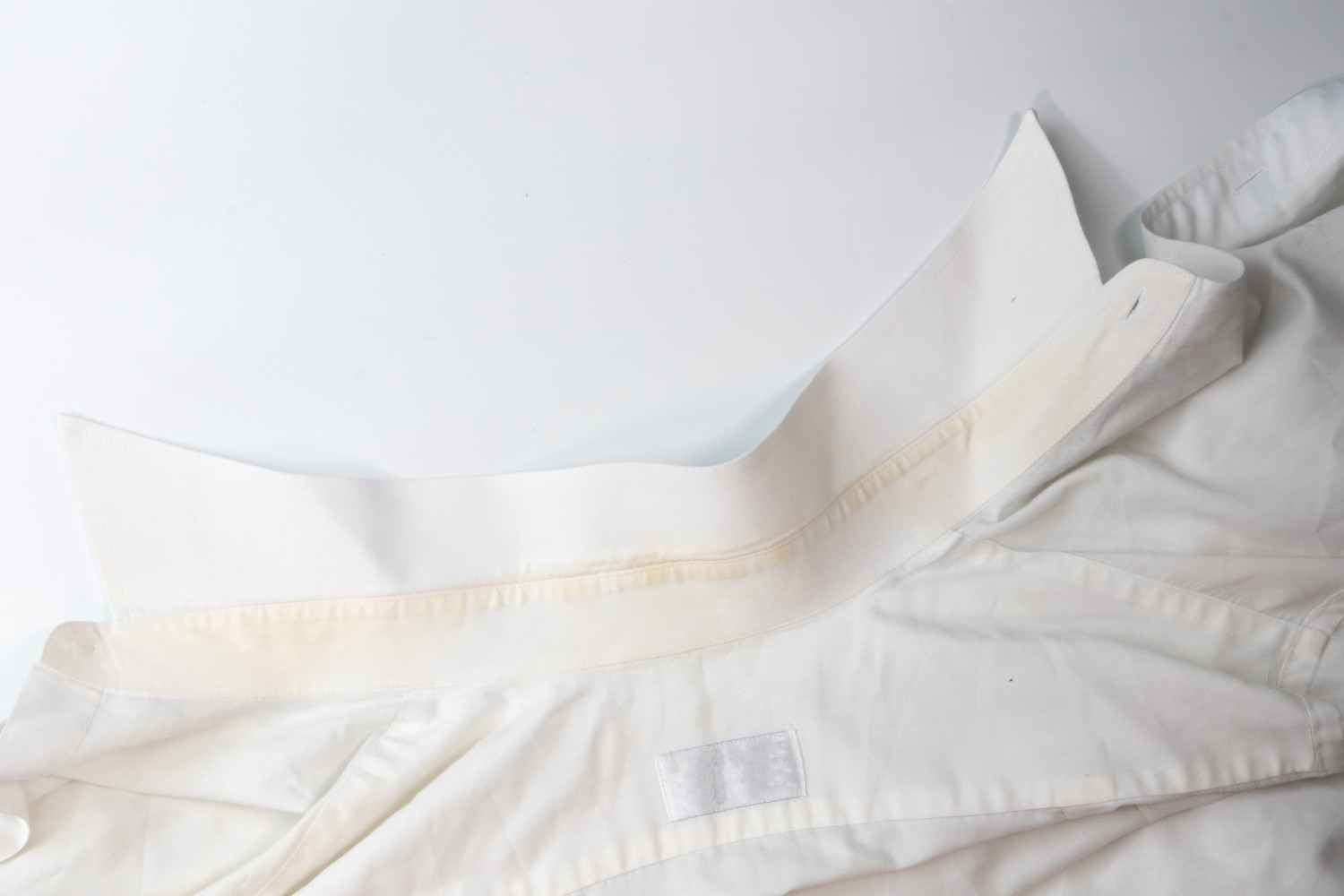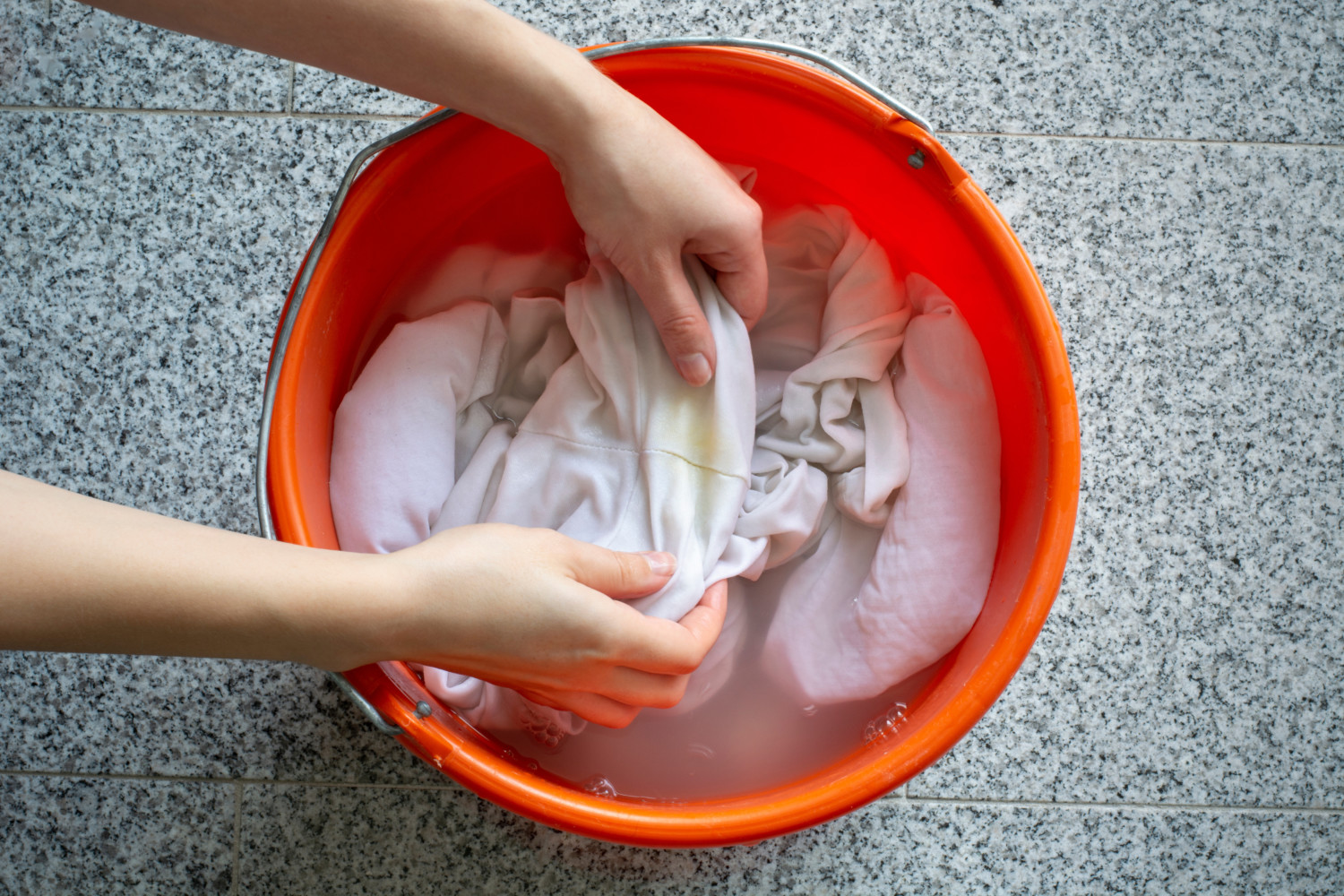Everybody sweats. Perspiration is mostly water and sodium chloride, commonly known as salt. However, it also contains varying concentrations of numerous other substances. Add deodorant or antiperspirant to the mix, and you have a combination that can discolor clothing, bedding and other fabrics we come into contact with when we sweat. Knowing how to get rid of sweat stains can help you remove embarrassing discoloration from clothing and other items.
What Do Sweat Stains Look Like?
Sweat stains can appear white. For instance, you might see a white ring on your favorite baseball cap. This is caused by the accumulation of salt from perspiration. Sweat stains can also look yellow. This is usually a reaction to products you wear to deal with perspiration.
Your skin has two types of sweat glands. Eccrine glands open onto the skin’s surface all over the body and secrete odorless sweat to regulate your body temperature. For instance, you have eccrine glands on your forehead and palms. The second type, apocrine glands, open into hair follicles in places like your scalp and armpits.

“Deodorant and antiperspirants contain many varied ingredients which can and will create staining when coupled with perspiration,” Wayne Edelman, CEO of Meurice Garment Care, told Lifehacker. “These ingredients read like a chemistry lesson, and include aluminum-based elements as well as wax-based formulas and petrochemicals.”
A “ring around the collar” stain, which you may recognize if you wear a lot of white button-down shirts to the office, is made from a combination of sweat, body oils and dead skin that is typically brownish yellow.

Colored sweat can also come from a condition called chromhidrosis, which can cause perspiration to be yellow, green, blue, brown or black. However, this condition is extremely rare, according to the International Hyperhidrosis Society.
How to Get Rid of Sweat Stains
Like other stains, treating perspiration stains as soon as possible will help you get the best results. Rinse the stained area with cold water as soon as you notice the discoloration. You can also scrub the spot with a bit of distilled white vinegar, which is helpful if you cannot wash the item immediately.
To get rid of sweat stains in white clothing, pre-treat with a mixture of 1/2 teaspoon of laundry detergent, 1/4 cup of white vinegar and 1/4 cup of cool water. Let the garment sit for at least 20 minutes or up to overnight. The more severe the stain, the longer you should let it soak. Wash in warm water unless the clothing label advises against it.
Avoid using chlorine-based bleach on sweat stains, although you’ll be tempted, as this can react to the protein in these stains and make them more yellow. However, you can use OxiClean, which doesn’t contain chlorine. Repeat the process before drying if any staining remains.

For sweat stains on colored clothing, make a paste using 4 tablespoons of baking soda and 1/4 cup of warm water and scrub it into the stain. Let the paste dry for about two hours, and then toss the garment into the washer without removing the paste. Again, wash in warm water unless the clothing label advises against it. This method also works well for sweat-stained hats. Treat and wash again before you dry the item if any of the stain remains.
If you have silk, wool or dry clean-only garments, avoid trying to remove sweat stains from them. Instead, take them to a reputable dry cleaner and ask them to remove the stain for you.
How to Prevent Sweat Stains
Although you now know how to get rid of sweat stains, you’ll probably want to try to avoid dealing with them in the future. Steps like wearing an undershirt or underarm sweat pads can help absorb perspiration and keep it from damaging your best clothing. In addition, you may want to trim or shave body hair that can collect moisture and deodorant, increasing the likelihood of stains. Wearing loose-fitting shirts and breathable fabrics can reduce perspiration, as well.
Keeping your clothes looking fresh will help you be more confident and protect the garments you love to wear.
This story originally appeared on Simplemost. Checkout Simplemost for additional stories.


